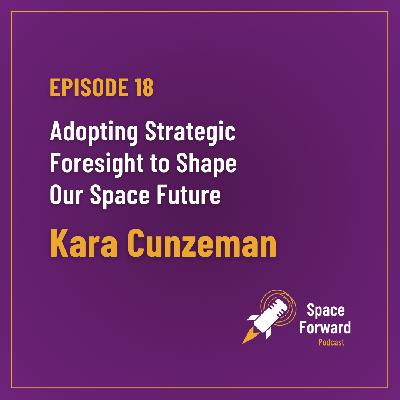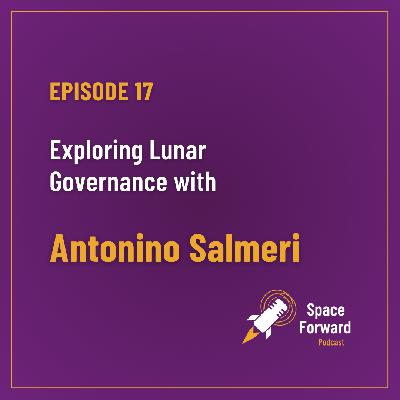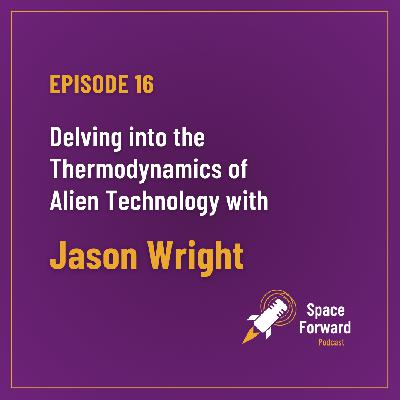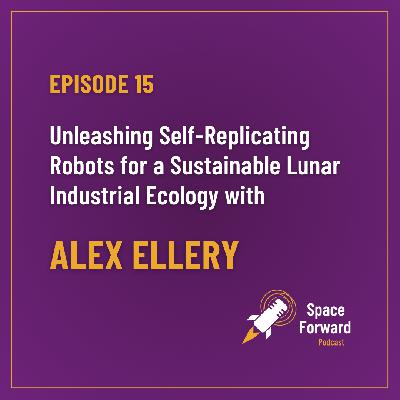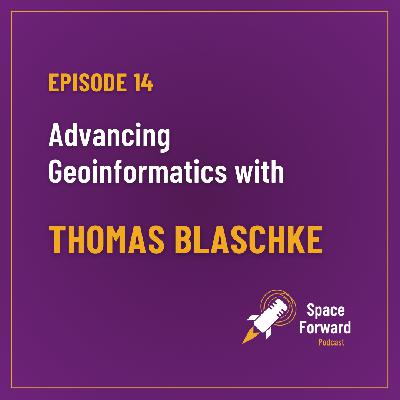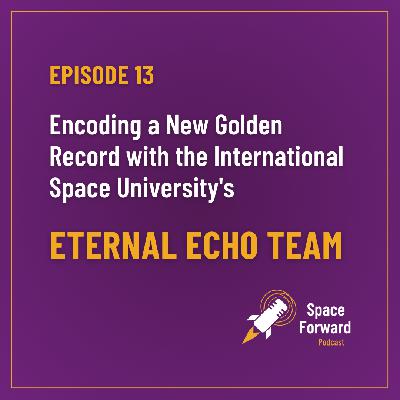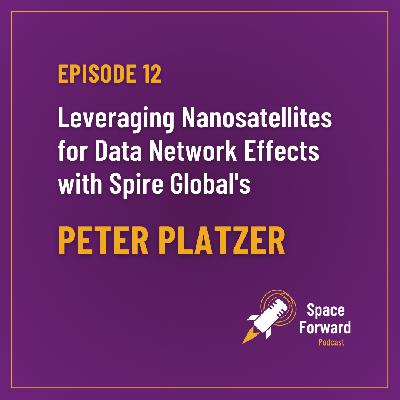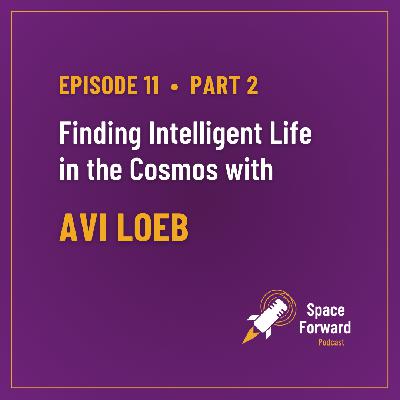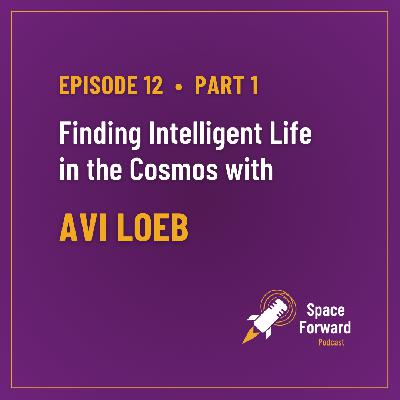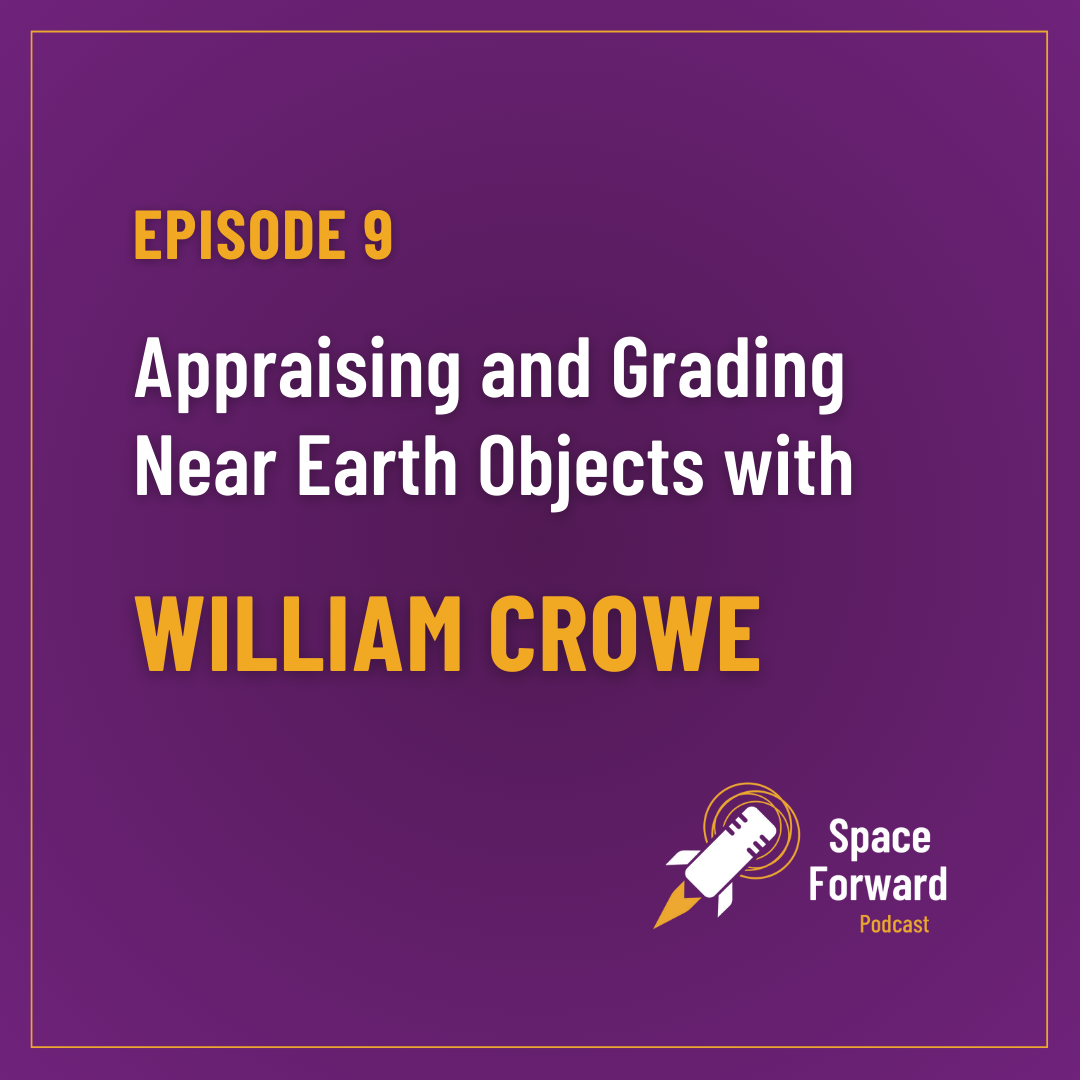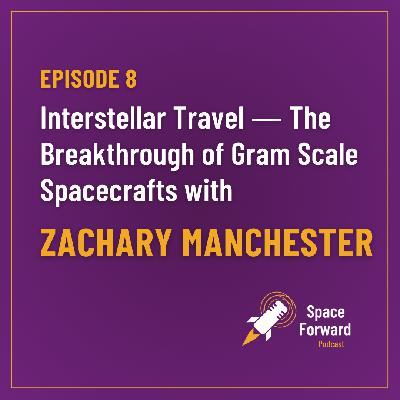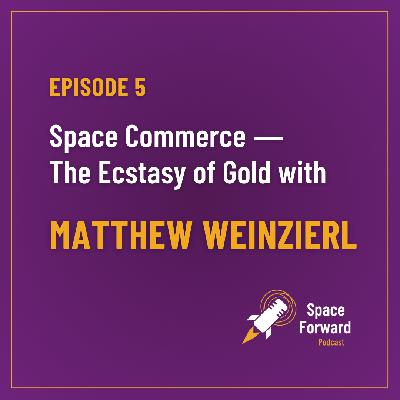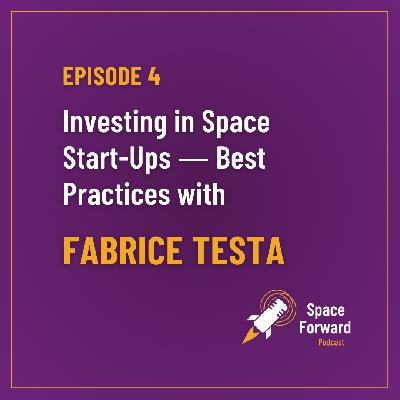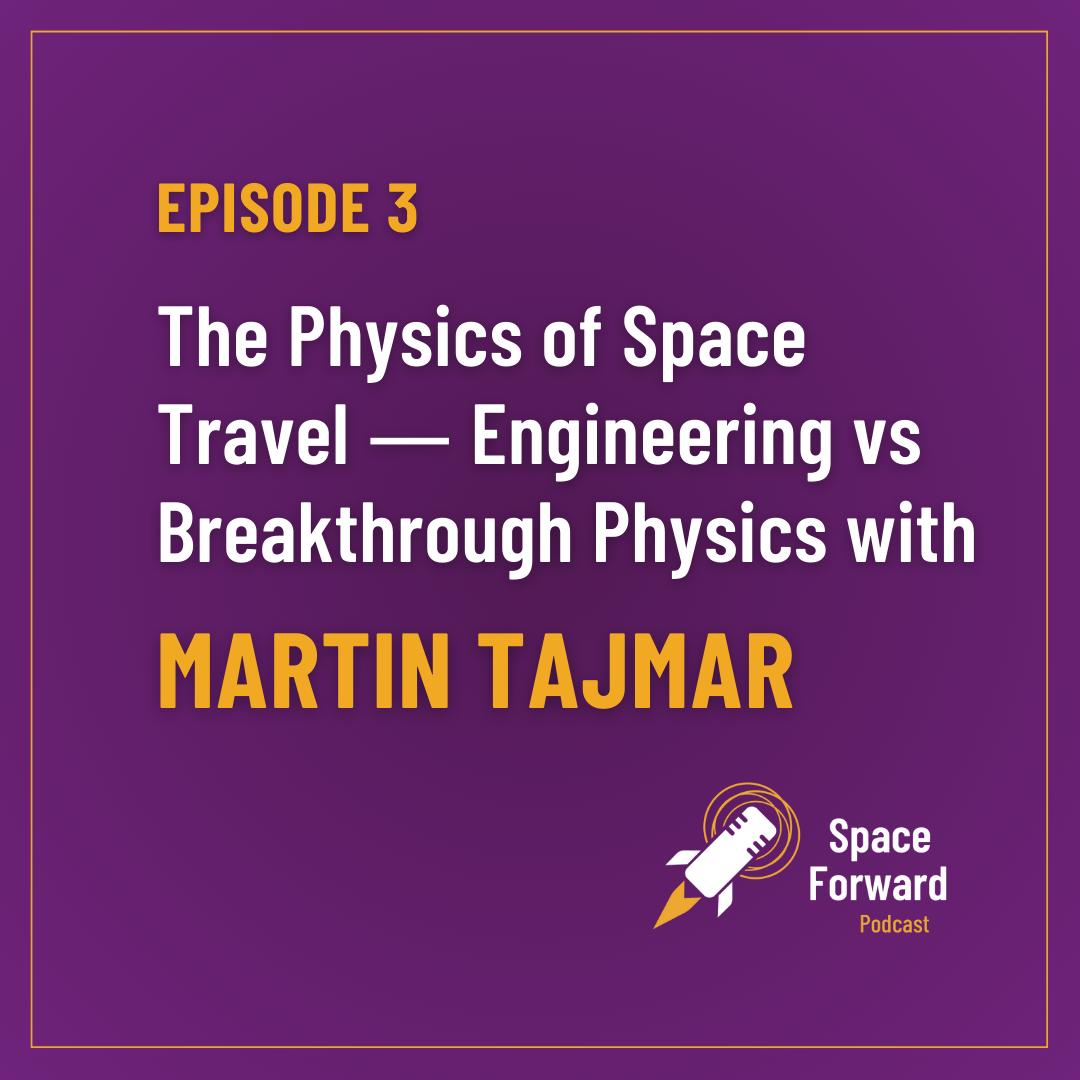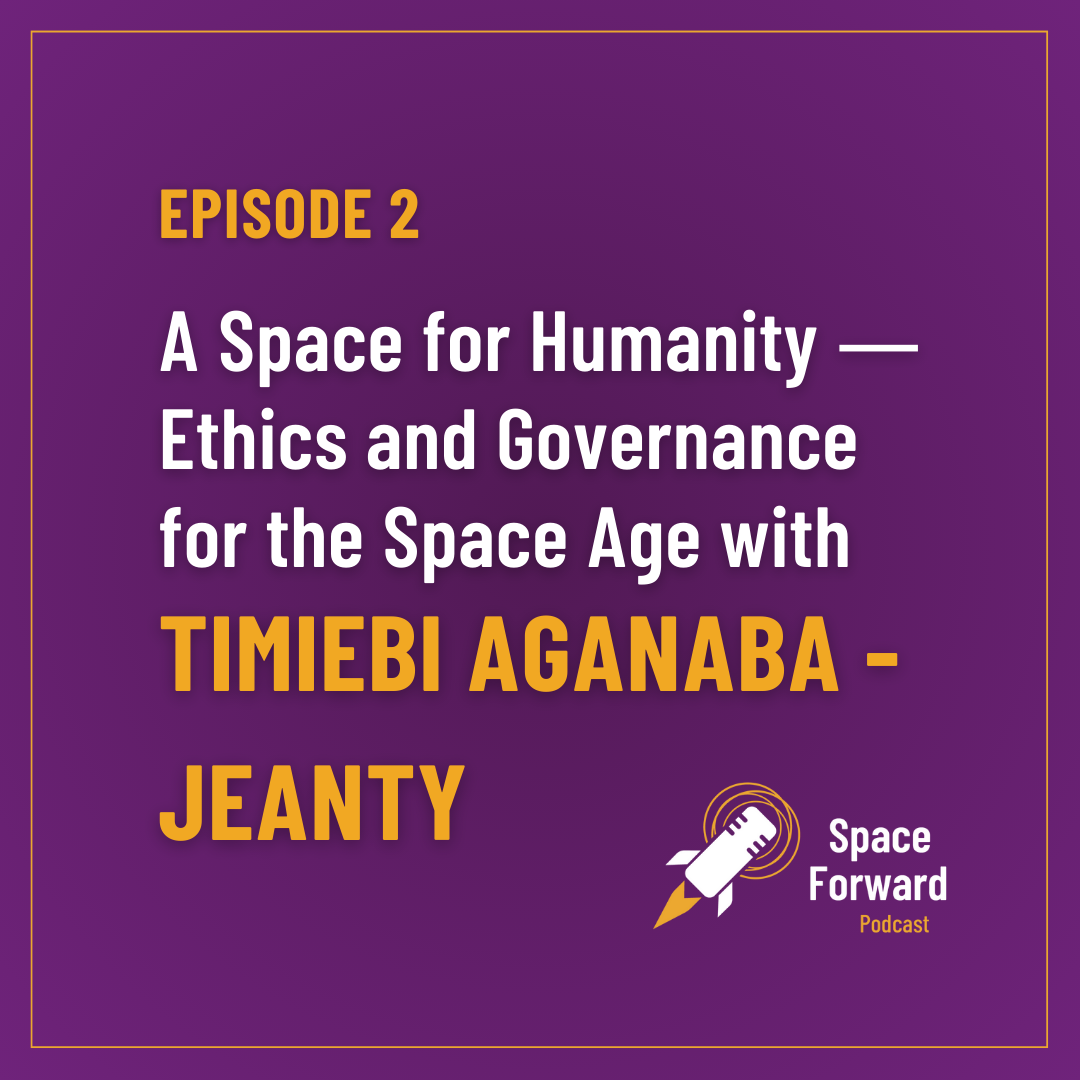Discover Space Forward Podcast
Space Forward Podcast

Space Forward Podcast
Author: Space Forward
Subscribed: 2Played: 22Subscribe
Share
© Space Forward
Description
Space Forward examines our future in space, discerning science fiction from science fact. Through insightful conversations with forward-thinking visionaries, we deconstruct the challenges and opportunities for space exploration, breaking down complex concepts into first principles.
16 Episodes
Reverse
Join us for a space forward-thinking conversation with Kara Cunzeman, systems director of Strategic Foresight at the Aerospace Corporation’s Center for Space Policy and Strategy.
Kara talks to us about Strategic Foresight, a holistic approach toward facing future uncertainties. Strategic Foresight isn’t mind reading, but rather mind mapping. It’s a tool that helps us address tough questions like - How do we navigate difficult issues in space policy to arrive at a preferred future - or - How do we envision the long-term view, going beyond the status quo to meet future challenges and opportunities?
Buckle up as we blast off into some future space scenarios with Kara Cunzeman.
Who owns what on the moon? Legally, nobody according to the United Nation’s Outer Space Treaty. With an array of space agencies and private companies destined to launch a multitude of lunar missions in the coming decades, the principles of the 1967 treaty will be put to the test. How will we mediate the multiple stakeholders set to explore the moon?
For answers, we turn to space lawyer Antonino Salmeri, who specializes in the governance of space resources and lunar activities. Salmeri is a policy analyst at the Open Lunar Foundation and Co-Chair of the UN’s Space Generation Advisory Council. He holds four advanced degrees in law — a Ph.D. in Space Law from the University of Luxembourg, an Advanced LL.M. in Air and Space Law from the University of Leiden, a second-level LL.M. in EU Law and Policy from the LUISS University of Rome, and a Master Degree in Law from the University of Catania.
From flag planting to moon police, tune in to discover how we are shaping legal frameworks for exploring the moon.
Blast off with Jason Wright, a professor of astronomy and astrophysics at Penn State and director of the Penn State Extraterrestrial Intelligence Center. We delve into the latest scientific methods in the search for technosignatures or evidence of extraterrestrial technologies. Coined by the astronomer Jill Tarter, a co-founder of the SETI Institute, technosignatures encompass communicative signals such as radio waves and laser emissions from other stars across and beyond the electromagnetic spectrum, artifacts like artificial satellites or space megastructures in and beyond our solar system, and other detectable signs of technological life beyond the Earth, like evidence of artificially induced environmental changes on another planet.
Listen in as we discuss the relevance of the Drake Equation and the Kardashev Scale in today’s search for ETIs, the significance of discerning Earth’s technosignatures, and the latest predictions of identifying an extraterrestrial technosignature within our lifetime!
Will extraterrestrial, self-replicating robotic systems pave the way for building a sustainable industrial lunar ecology?
Self-replicating robots are machines that can replicate themselves using materials found in their environment. The concept of self-replicating systems has been around for decades, ever since the mathematician John Von Neumann proposed theoretical models in the 1950s. Since then, research toward building self-replicating machines has evolved with advancements in robotic systems, 3D printing, and space exploration.
Now that NASA and other space agencies are focused on returning humans to the lunar surface, researchers like Professor Alex Ellery are developing new robotic systems capable of operating in extreme conditions like the moon. But Ellery is advocating for self-replicating machines, not as an egotistical, science fiction fantasy, but as a means to create a sustainable industrial lunar ecology, whereby precious resources like ice and regolith are recycled and reused.
Tune in now to Episode 15 and find out why Professor Ellery stopped believing in ETs and started believing in self-replicating robots!
From predicting destructive landslides and urban traffic jams, to tracking illegal deforestation and human rights abuses, Dr. Thomas Blaschke’s research work analyzing Big Earth Data helps address real world solutions. Tune in now for Episode 14: Advancing Geoinformatics to discover our emerging Digital Earth, and the future possibility of developing a new field of academic inquiry, Astroinformatics!
How to design a durable and decipherable message for an intelligent species
elsewhere in the cosmos? We talk to team members from the International
Space University's Space Studies Program about their project Eternal Echo,
an assignment to create an updated version of the Golden Record, a
gold-plated copper disk of sounds and images affixed to both Voyager
spacecraft launched in 1977. Team members explain their methodologies and
ponder the implications of Messaging Extra Terrestrial Life (METI), the
future of humanity, and the need for open-access science to improve life on
Earth now.
Space Forward talks the CEO of Spire Global, Peter Platzer, one of the few
space entrepreneurs who predicted early on the exponential growth and value
of nano-satellites, as well as their impactful role toward harnessing big
data for solving problems here on Earth.
In this second installment, we continue our discussion with Harvard Professor Avi Loeb. We discuss ― Life In The Cosmos ― an academic textbook he co-authored with Manasvi Lingam which provides an analysis of the latest scientific methodologies for detecting life beyond our planet. We dive into the Kardashev Scale, a theoretical model for classifying stages the development of intelligent alien civilizations based on energy consumption, and the potential of applying a modified version, based on a more indirect but proportional scale of wasted heat or entropy production, toward today’s search for extraterrestrial intelligences (ETIs). Learn more about Avi’s work with Breakthrough Starshot, a proposed flyby mission to our neighboring solar system Alpha Centauri, and how his recently funded Galileo Project will help to demystify Unexplained Aerial Phenomena. Join us as we survey the latest endeavors to detect alien technosignatures, and explore whether monkeys may one day compose Shakespeare’s Hamlet on a typewriter.
In this episode, we talk with astrophysicist Avi Loeb about what he thinks we might find in the observable universe. Will it be biosignatures that will reveal extraterrestrial life? Or technosignatures, evidence of a past or present alien technology? Join us as he discusses his latest book Life in Cosmos: From Biosignatures to Technosignatures, the possibilities of self-replicating, artificial intelligent von Neumann probes, and the absurdness - or not - of eating aliens!
Professor Avi Loeb is the Director of the Harvard Smithsonian Center for Astrophysics. He received his PhD in plasma physics at the Hebrew University of Jerusalem, and worked as a theoretical astrophysicist at Princeton Institute of Advanced Study. Loeb is a New York Times bestselling author, chairs the Breakthrough Starshot Initiative, and founded the current Galileo Project advancing the search for extraterrestrial life.
We discuss Earth's first on-orbit satellite inspection service with William
Crowe, CEO of the Australian startup High Earth Orbit Robotics, who is on a
quest to “makes space assets transparent”. We unpack how this space start
up pivoted from asteroid mining to space situational awareness, and future
business to scale for the Moon, asteroids, and beyond!
In this episode, we will explore the rapid miniaturization of spacecraft,
commonly known as Chipsats, Wafersats, Sprites, Monarchs, Kicksats,
Starchips, or even just “Smart Dust” with Zachary Manchester, who received
critical acclaim for his crowdfunded Kicksat project, deploying an armada
of chipsats in LEO. Manchester is also a researcher with the Breakthrough
Starshot team, working on an interstellar spacecraft mission to Proxima b.
We talk to Matthew Weinzierl, an Associate Professor in the Business,
Government, and International Economy Unit at Harvard Business School.
Weinzierl has worked as an economist for McKinsey & Company and The White
House Council of Economic Advisors. Professor Weinzierl’s early research
focuses on the optimal design of economic policy, and more recently he has
launched an array of projects focused on the commercialization of the space
sector and its economic implications.
In this episode, we seek to understand the decision-making environment in
which Space Business Angels operate and the mindset they follow when making
investment decisions ― exploring best practices, and getting an industry
outlook from those with skin in the game.
In this episode, we’ll take you on a deep dive into the physics of space
travel. Are we merely grappling with a challenging engineering problem or
will new breakthroughs toward an entirely new physics be required in order
to utilize space to its fullest potential?
In this episode, we talk to Timiebi Aganaba-Jeanty and examine the
bottlenecks toward international and intercultural collaboration here on
Earth, preventing humanity from becoming a prosperous, inclusive, and
peaceful multi-planetary species.
This episode has at its core the implications of Tsiolkovsky’s rocket
equation, which figures the hard limits of rocket-based payload
transportation to Earth’s orbit. We uncover alternatives with Joshua
Bernard-Cooper, a researcher at the International Space Elevator
Consortium.


